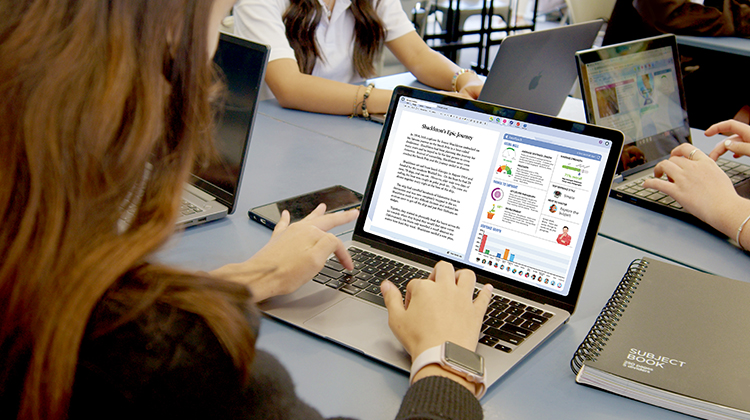Digital Amnesia, Teacher Workloads, and AI: Is there a Solution?

Teacher shortages, growing workloads, lower than desired NAPLAN results: as we approach the upcoming Federal Election on 3 May, this combo is sounding like an all-too-familiar trifecta. Much needed support has come in the form of a $16.5 billion Government investment over the next 10 years to support publicly-funded schools.
Part of the package will go toward attracting and retaining teachers, with focused initiatives to support students who are falling behind. It’s an ambitious programme: one of the targets is to attain the highest proportion of students receiving a Year 12 Certificate ever.
Still, having sufficient teachers on the ground with relevant expertise to deliver such an aim in five years’ time might be challenging. Despite a seven per cent rise in admissions to teacher training programmes, some forecasts suggest an immediate shortfall of 4100 teachers. Practical steps are being taken, including additional scholarship programmes at Australian Catholic University (ACU), the country’s largest single trainer of teachers. But the loss of experience is still being felt in classrooms countrywide.
AI has been touted as a potential remedy. The plan is simple. Use AI to do things so teachers don’t have to and free up classroom time for the things that matter. Consequently, a range of pilot AI programmes have been launched in the past 18 months to use AI to reduce teacher workload through lesson planning. The WA Department of Education is piloting a programme with eight schools using AI to produce lesson plans and supporting materials. The aim is twofold: to free up teacher time from administrative tasks, and to enable teachers to spend more time in quality student interactions. NSW is doing similar with the NSWEduChat application, hoping to save teachers between one and five hours a week.
While laudable - and initial results from the AI trials suggest resource material production has been helpful - will these measures really go far enough to ensure students get the level of individualised learning they require to succeed?
Indeed, these two parallel issues are at the heart of much of the concern: individual student attention and insufficient teacher numbers. Commentators are assuming if we solve the teacher shortage, we solve the student learning problem. But will we? In classrooms with widely differentiated student needs, and still only 70 minutes a lesson, can an individual teacher - even a master teacher - give 30-plus students the individualised attention they require in their most teachable moments?
It is in this context that Educational AI comes to the fore. Unlike Generative AI (used to produce answers and build lesson plans), Educational AI has been built to teach students. It acts like a second expert in the classroom, on the desk of the individual student. Indeed, Educational AI directly combats what educationalists have been sounding warnings about: the effects of “offloading”.
Offloading, or what some have termed the “Google effect” or “digital amnesia” is the habit of relying on digital tools to look up information instead of storing knowledge in the human brain. It comes at a cost. One 2024 study found students who used ChatGPT to produce essays produced higher-quality work, but showed no knowledge improvement when tested later. In fact, they performed worse. As students hadn’t undertaken the corrections and reflections themselves, their metacognitive processes were underdeveloped.
It is in this regard, Educational AI applications in mathematics and reading and writing are being noticed. Instead of giving students answers, or encouraging offloading, such applications have been built to strengthen metacognitions and higher-order thinking skills.
One company at the forefront of this technology is award-winning EdTech firm Writer’s Toolbox. Over a ten-year $20 million research and development programme, the company has built a sophisticated Educational AI platform that works to develop a student’s metacognitive skills and deepen reasoning and knowledge retention. Eight schools from Brisbane Catholic Education involved in its pilot Educational AI Writing programme have achieved NAPLAN growth rates eight times higher than state counterparts.
Students are at the centre of learning. If we want to see this present generation maximise their potential and not be left behind, we need to start now. We can’t fix teacher shortages overnight, but we can use Educational AI to meet the individual student in their most teachable moments, and work to deepen both their metacognitive skills and their socio-emotional skills.
In quite different curriculums across the UK and Australia, we have seen strong gains in student learning, confidence, engagement, self-regulation, and performance using a dedicated Educational AI program. At growth rates outperforming national averages. This happens when you combine the skills of great teachers with the best of what AI “built-to-teach” can deliver.
Whatever the outcomes, one thing is sure. If we want the sort of world-leading knowledge economy the Government is projecting, with the highest proportion of students receiving a Year 12 Certificate in Australian history, we cannot keep doing the same things we did yesterday.